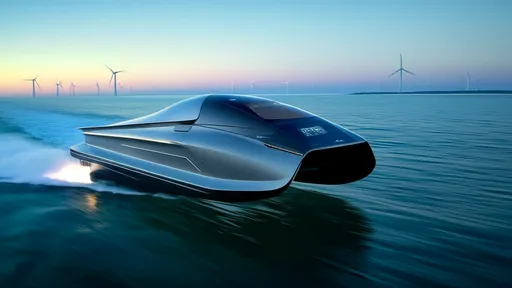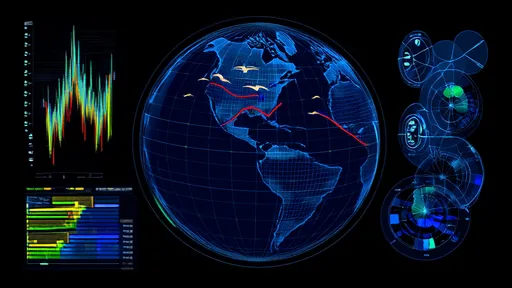The concept of marine cloud brightening through aerosol injection has emerged as a potential geoengineering strategy to mitigate global warming. By increasing the reflectivity of marine clouds, scientists aim to bounce more sunlight back into space, thereby cooling the planet. This approach, often referred to as "marine cloud engineering," hinges on the deliberate introduction of fine sea salt particles or other aerosols into low-lying marine clouds to enhance their albedo effect.
The Science Behind Aerosol Brightening
At its core, marine cloud brightening exploits a natural phenomenon known as the Twomey effect. When aerosols are introduced into cloud layers, they act as additional nuclei for water droplets to form. This leads to a higher concentration of smaller droplets within the cloud, which in turn increases its surface area and reflectivity. The result is a brighter cloud that scatters more incoming solar radiation. Over vast oceanic regions, where low-lying stratocumulus clouds are prevalent, even modest increases in reflectivity could have significant cooling effects on a global scale.
Field experiments and modeling studies have shown promising results. For instance, research conducted over the eastern Pacific demonstrated that ship tracks—visible lines of brighter clouds formed by aerosol emissions from vessels—can persist for days and exhibit measurable cooling effects. These natural analogues provide valuable insights into how deliberate aerosol injections might function on a larger scale. However, the challenge lies in scaling up these effects without triggering unintended consequences, such as disruptions to regional rainfall patterns or ocean circulation systems.
Technological and Logistical Considerations
Implementing marine cloud brightening at a climate-relevant scale would require overcoming substantial technological hurdles. One proposed method involves fleets of unmanned, wind-powered vessels equipped with specialized nozzles to spray seawater aerosols into the atmosphere. The particles would need to be finely tuned in size—typically between 0.1 and 1 micrometer—to optimize their cloud-nucleating properties. Too large, and they might rain out too quickly; too small, and they may fail to effectively seed droplet formation.
Another critical factor is the selection of target regions. Not all marine clouds are equally suitable for brightening. Ideal candidates are stable, shallow stratocumulus clouds that cover large swaths of the ocean, particularly off the western coasts of continents where cold upwelling waters create favorable conditions. The southeastern Pacific, for example, is often cited as a prime location due to its extensive cloud cover and relatively predictable meteorological conditions.
Ethical and Governance Challenges
Beyond the scientific and technical aspects, marine cloud brightening raises profound ethical and governance questions. Unlike carbon dioxide removal, which addresses the root cause of climate change, solar radiation modification techniques like aerosol brightening merely mask the symptoms. Critics argue that reliance on such measures could divert attention and resources away from essential emissions reductions, creating a moral hazard. Moreover, the transboundary nature of atmospheric effects means that unilateral deployment by one nation could have far-reaching impacts on others, potentially leading to geopolitical tensions.
The lack of international frameworks to govern large-scale geoengineering poses another significant challenge. Current environmental agreements were not designed to regulate deliberate climate interventions, leaving a legal vacuum. Some experts advocate for a moratorium on field testing until robust governance structures are in place, while others warn that delaying research could leave humanity unprepared if rapid climate interventions become necessary.
Ecological Impacts and Uncertainties
Perhaps the most pressing concern surrounding marine cloud brightening is its potential to disrupt marine ecosystems. Changes in cloud cover and reflectivity could alter surface light levels, affecting phytoplankton productivity—the foundation of the oceanic food web. Shifts in regional precipitation patterns might also occur, with possible knock-on effects for fisheries and coastal communities. These uncertainties underscore the need for comprehensive ecological risk assessments before any large-scale implementation.
Climate models suggest that while marine cloud brightening might successfully cool the planet overall, it could create winners and losers at regional scales. Some areas might experience beneficial cooling, while others could face unintended consequences like drought or extreme weather events. This uneven distribution of effects complicates the decision-making process and highlights the importance of global cooperation in any potential deployment.
The Path Forward: Research and Dialogue
Despite the challenges, many climate scientists argue that research into marine cloud brightening should continue, albeit with appropriate safeguards. Carefully controlled field experiments, coupled with advanced modeling, could help reduce uncertainties about efficacy and side effects. At the same time, inclusive international dialogues must address the ethical dimensions and develop governance mechanisms to ensure responsible research practices.
The debate over marine cloud brightening reflects broader tensions in climate policy between immediate risk reduction and long-term sustainability. As the planet continues to warm and climate impacts intensify, such geoengineering approaches may transition from theoretical possibilities to necessary tools in humanity's climate adaptation arsenal. However, they should not be viewed as silver bullets, but rather as potential complements to aggressive emissions reductions and other climate mitigation strategies.
What remains clear is that any consideration of marine cloud engineering must be grounded in rigorous science, transparent decision-making, and respect for the complex interplay between human systems and the natural world. The oceans, which have long buffered humanity from the worst effects of climate change, may yet offer additional solutions—but we must approach them with both innovation and humility.

By /Jul 18, 2025

By /Jul 18, 2025

By /Jul 18, 2025

By /Jul 18, 2025

By /Jul 18, 2025

By /Jul 18, 2025

By /Jul 18, 2025

By /Jul 18, 2025

By /Jul 18, 2025

By /Jul 18, 2025

By /Jul 18, 2025

By /Jul 18, 2025

By /Jul 18, 2025

By /Jul 18, 2025

By /Jul 18, 2025

By /Jul 18, 2025

By /Jul 18, 2025

By /Jul 18, 2025